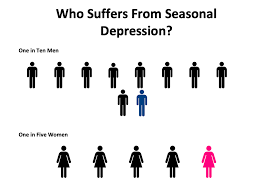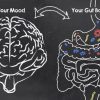- Empty cart.
- Continue Shopping
How to Manage Seasonal Affective Disorder in Men

Seasonal Affective Disorder (SAD) is a type of depression that typically occurs at the same time each year, most commonly in the fall and winter months. While SAD affects both men and women, men may be less likely to seek help or recognize the symptoms.
1. Recognize the Symptoms
The first step in managing SAD is recognizing the symptoms. Common signs of SAD include:
- Depressed mood: Feeling persistently sad, anxious, or empty.
- Low energy: Experiencing fatigue and a lack of motivation.
- Changes in sleep patterns: Oversleeping or experiencing insomnia.
- Weight and appetite changes: Overeating, particularly craving carbohydrates, and gaining weight.
- Difficulty concentrating: Struggling with focus and decision-making.
- Loss of interest in activities: Losing interest in activities you once enjoyed.
- Social withdrawal: Avoiding social interactions and feeling isolated.
Men with SAD may also experience irritability, restlessness, and physical symptoms such as headaches or stomachaches.
2. Seek Professional Help
If you suspect you have SAD or are experiencing symptoms of depression, it’s crucial to seek professional help. A mental health provider can diagnose your condition and develop a tailored treatment plan. Treatment options may include:
- Counseling or psychotherapy: Cognitive-behavioral therapy (CBT) and other talk therapies can help individuals learn strategies to manage SAD symptoms.
- Medication: Antidepressant medications, particularly those classified as selective serotonin reuptake inhibitors (SSRIs), are sometimes prescribed to alleviate SAD symptoms.
3. Light Therapy
Light therapy, also known as phototherapy, is a common treatment for SAD. It involves exposing yourself to a bright light, typically a lightbox, that mimics natural sunlight. Light therapy is thought to reset the body’s internal clock and boost mood-regulating chemicals in the brain.
To use light therapy effectively:
- Consult a healthcare provider: Discuss the use of light therapy with a medical professional, who can recommend the appropriate lightbox and usage duration.
- Establish a routine: Use the lightbox at the same time each day, preferably in the morning.
- Sit close to the light: Position the lightbox about 16-24 inches from your face, but avoid looking directly into the light.
- Use it consistently: Continue light therapy daily throughout the fall and winter months or as recommended by your healthcare provider.
4. Maintain a Healthy Lifestyle
Certain lifestyle changes can complement professional treatment and help manage SAD symptoms:
- Regular exercise: Physical activity can boost mood and reduce symptoms of depression. Aim for at least 30 minutes of exercise most days of the week.
- Balanced diet: Eat a well-balanced diet rich in fruits, vegetables, whole grains, and lean proteins. Avoid excessive consumption of sugary or highly processed foods.
- Sleep hygiene: Maintain a regular sleep schedule and create a sleep-conducive environment. Avoid excessive screen time before bedtime.
- Limit alcohol and substance use: Alcohol and recreational drugs can exacerbate symptoms of depression, so limit or avoid their use.
- Social support: Stay connected with friends and loved ones. Engage in social activities even when you don’t feel like it.
5. Manage Stress
Stress can exacerbate symptoms of SAD. To manage stress effectively:
- Practice relaxation techniques: Techniques such as deep breathing, meditation, and progressive muscle relaxation can help reduce stress.
- Time management: Prioritize tasks and set realistic goals to reduce feelings of overwhelm.
- Seek support: Talk to a therapist or counselor about managing stress and improving coping strategies.
6. Create a Lighter Environment
Make your living space brighter and more cheerful to counteract the darkness of winter:
- Open curtains and blinds: Let in as much natural light as possible during the day.
- Use artificial light: Incorporate additional lighting, such as floor lamps and desk lamps, to brighten your space.
- Decorate with warm colors: Choose warm and vibrant colors for your home decor to create a more inviting atmosphere.
7. Plan Enjoyable Activities
Engage in activities that bring you joy and fulfillment, even when you don’t feel like it. Having things to look forward to can help combat SAD symptoms.
8. Consider Vitamin D Supplements
Some research suggests a link between vitamin D deficiency and SAD. Consult your healthcare provider about the possibility of vitamin D supplementation, especially during the winter months.
In Conclusion, Seasonal Affective Disorder is a treatable condition, and men should not hesitate to seek help if they suspect they are experiencing its symptoms. With proper diagnosis and treatment, along with lifestyle adjustments and self-care strategies, men can effectively manage SAD and improve their mental well-being, even during the darker and colder months of the year.








